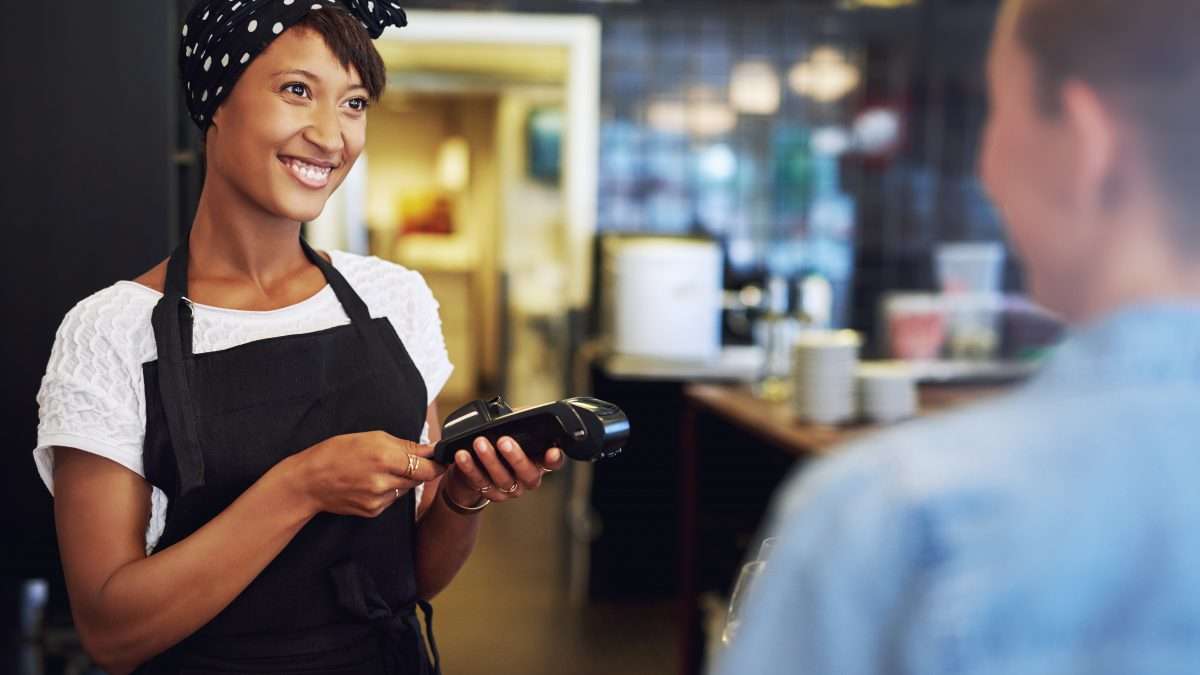
Smiling attractive African American small business owner taking payment from a customer processing a credit card through the handheld banking machine
Is the no-tipping movement sustainable for restaurants?
By: Mackenzie Currier
What is the no-tipping movement? The no-tip model pays restaurant servers and back workers a fair and predictable wage independent of customers’ discretion. The cost of higher staff wages is reflected in raised menu prices.
Currently, most restaurant servers receive a lower “minimum wage,” with the onus on tipping to supplement their salaries. This tipping culture is deeply ingrained in Canadian consumers, and questions about whether a no-tip model can attract staff and customers have been raised.
“Why should restaurant employees take a substandard minimum wage and have their compensation based on strangers?”
Barque BBQ in Toronto adopted a no-tip model on May 4th, 2022. Restaurant owner David Neinstein provides his employees with an hourly wage of $22.25 or more, plus paid sick days, personal days, and health benefits.
Neinstein wanted his staff to have a predictable and stable income. Because tipping is wholly dependent on the customer, servers may be tipped less because of prejudice or bias, with back workers generally receiving less compensation than servers. “Why should restaurant employees take a substandard minimum wage and have their compensation based on strangers?” he says.
Contrarily, not all servers are receptive to a shift in payment structure. Neinstein shared that some servers were hesitant to renegotiate a contract because it meant a pay cut due to losing tips.
The way the restaurant industry functions, some servers take home hundreds nightly in tips. Tip money is also highly unregulated and some servers choose not to declare this income so they can avoid taxes. “That untaxed income is what a lot of people don’t want to give up,” says Neinstein.
The COVID-19 pandemic meant high staff turnover, so Neinstein was able to hire new staff with the no-tip salary expectation from the start, and more easily renegotiate with current workers. His renewed focus on paid sick days was especially appealing during the pandemic. Neinstein explains that his business model draws and retains people who understand their paycheck will receive tax deductions.
Customers at Barque BBQ have generally responded positively to the shift, with Neinstein stating, “We thought there’d be a lot of complaints and problems with the change and there simply hasn’t been.”
Customer hesitancy to try no-tip restaurants
Other no-tip restaurants had no such luck. Vancouver restaurant Ritual switched back to a tipping model after negative customer feedback surrounding its no-tip policy. Ritual owner and chef Nevada Cope said, “It is awkward for people. We’ve had a lot of different experiences with customers where it’s weird,” in a 2016 CTV interview. The restaurant has since shut down.
Customer hesitancy to try no-tip restaurants reflects the generally positive stance Canadians have towards tipping culture. A report by Dalhousie University asked 990 respondents about their perceptions of tipping behaviour during the COVID-19 pandemic. 37% reported ‘Yes, they feel happy tipping’, with only 10% reporting that they are not happy. Because tipping culture is widely accepted, changing to a no-tip model raises challenges, but the risk offers a potential increase in staff stability and fairness.
